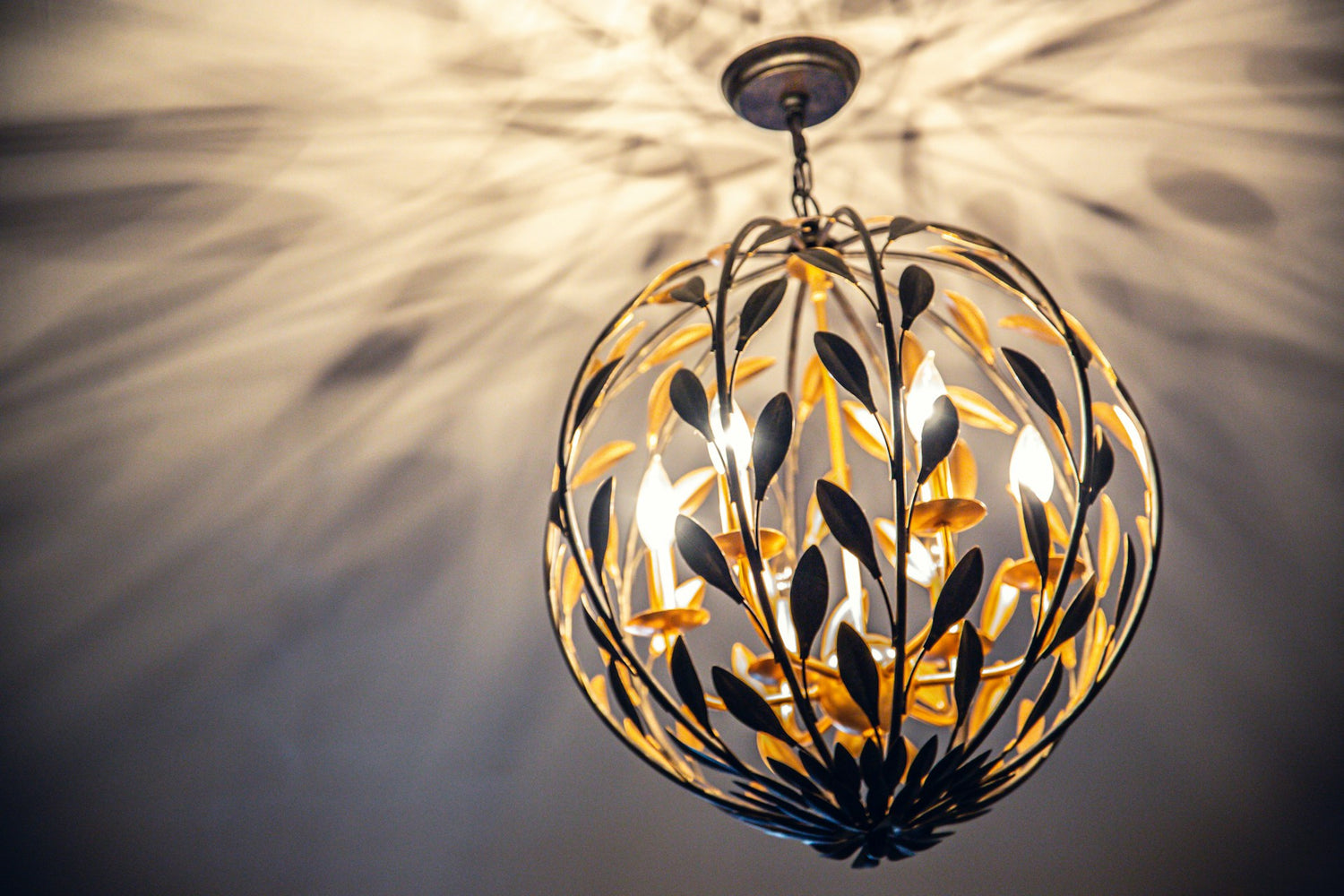When it comes to creating a well-lit, stylish space, a chandelier can serve as a stunning focal point. However, achieving the perfect lighting design often involves more than just hanging a beautiful chandelier. Combining chandeliers with other lighting fixtures can enhance the functionality and ambiance of your room. Here’s how to master the art of blending chandeliers with other lighting sources to create a harmonious and effective lighting scheme.
Layer Your Lighting
Effective lighting design relies on layering. By combining different types of lighting—ambient, task, and accent—you can create a versatile and dynamic environment. Here’s how each layer contributes:
- Ambient Lighting: This is the general illumination that fills the room. A chandelier can serve as your primary ambient light source but pairing it with recessed lighting or ceiling-mounted fixtures can ensure even coverage throughout the space.
- Task Lighting: Focused on specific areas where you need additional light for activities, task lighting includes fixtures like pendant lights over a kitchen island or reading lamps beside a sofa. When combined with a chandelier, task lighting ensures you have adequate light for tasks without sacrificing style.
- Accent Lighting: This type of lighting highlights particular features or creates a mood. Wall sconces, track lighting, or even LED strip lights can be used to accent architectural features, artwork, or décor, complementing the chandelier’s ambiance.
2. Complementary Styles
When combining chandeliers with other lighting fixtures, consider the style and design elements. The goal is to create a cohesive look where each fixture enhances the overall décor. For example:
- Modern Chandeliers: Pair a sleek, modern chandelier with minimalist pendant lights or recessed lighting. This combination keeps the space looking clean and uncluttered.
- Traditional Chandeliers: If you have a classic chandelier, complement it with antique-style sconces or vintage table lamps. These fixtures should echo the traditional charm of the chandelier while providing additional light.
- Industrial Chandeliers: For a chic industrial look, combine a rustic chandelier with exposed bulb pendant lights or track lighting. This adds depth and reinforces the industrial vibe without overshadowing the chandelier.
3. Use Different Light Sources for Different Zones
In larger spaces or open-plan areas, using multiple light sources can help define different zones. For instance:
- Dining Area: A chandelier can be the centrepiece above the dining table, providing both style and functionality.
- Living Area: Use a combination of floor lamps, table lamps, or recessed lighting to illuminate other parts of the living space. This ensures the chandelier doesn’t become the sole source of light.
- Work Zones: If your space includes a home office or reading nook, supplement the chandelier with adjustable task lighting to ensure you have sufficient light for focused activities.
4. Balance Brightness and Ambiance
A chandelier often provides a strong focal point with a soft, ambient glow. To maintain balance, use additional fixtures that offer adjustable brightness or have dimming capabilities. For example:
- Dimmer Switches: Install dimmer switches on both your chandelier and other lighting fixtures to easily adjust the brightness according to your needs and mood.
- Adjustable Fixtures: Pendant lights with adjustable heights or angles, as well as floor lamps with variable intensity, can help you manage the light distribution and ambiance throughout the room.
5. Consider the Colour Temperature
The colour temperature of your light bulbs can impact the room’s atmosphere. Chandeliers typically use warm or cool light, so ensure that other fixtures complement this choice:
- Warm Light: If your chandelier uses warm light, choose task and accent lighting with similar colour temperatures to create a cohesive and inviting environment.
- Cool Light: For chandeliers with cool light, pair them with fixtures that have a similar colour temperature for a modern, crisp look.
6. Play with Heights and Scales
When combining chandeliers with other lighting fixtures, vary the heights and scales to add visual interest:
- Different Heights: Hang your chandelier at an appropriate height and complement it with pendant lights or sconces positioned at varying levels. This creates a layered lighting effect that adds depth and dimension to the space.
- Scales: Mix different scales of lighting fixtures to avoid a monotonous look. For example, a large chandelier can be balanced with smaller pendant lights or sconces.
7. Create a Balanced Layout
Finally, ensure that your lighting layout is balanced and functional. Avoid placing too many fixtures in one area while leaving others dimly lit. The goal is to achieve an even distribution of light that highlights the chandelier while providing ample illumination throughout the room.
Conclusion
Combining chandeliers with other lighting fixtures is a fantastic way to enhance your home’s lighting design. By layering different types of lighting, complementing styles, and balancing brightness, you can create a beautifully illuminated and functional space. Whether you’re highlighting a dining area, defining living zones, or adding ambient warmth, thoughtful integration of chandeliers and additional fixtures will elevate the overall design and atmosphere of your home.
Happy lighting!


